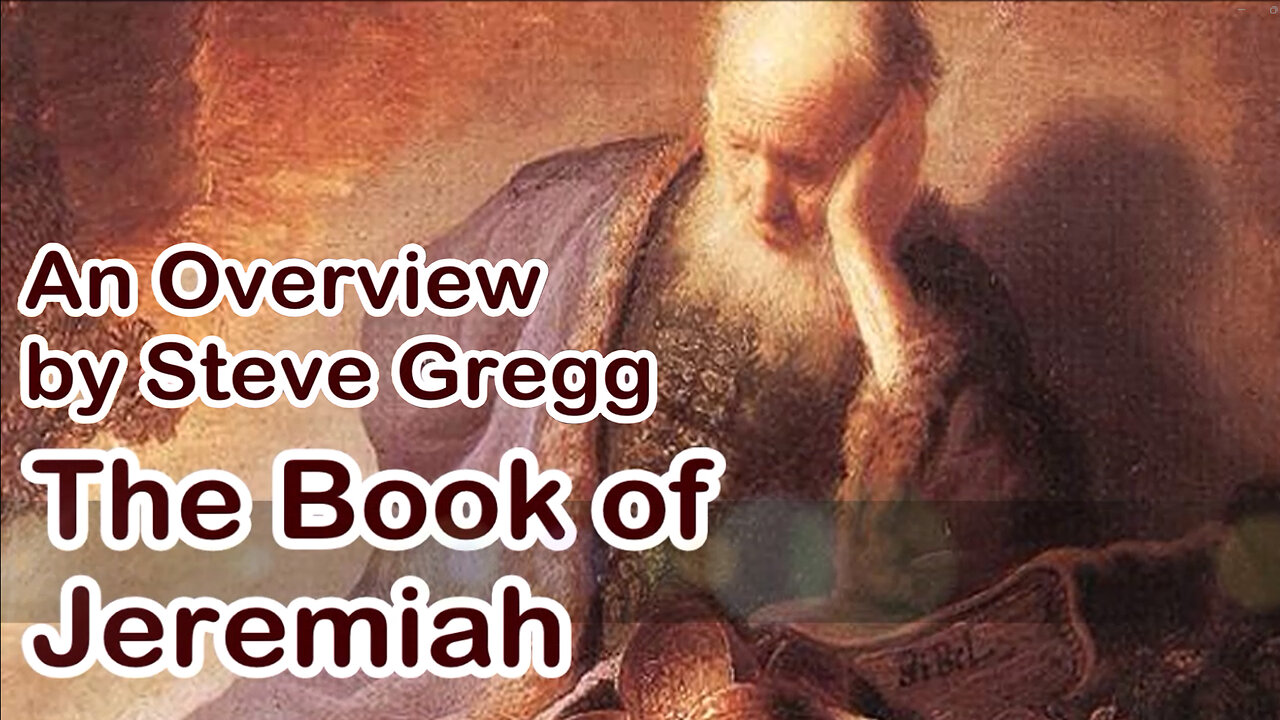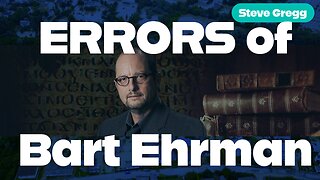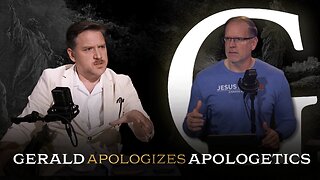Premium Only Content

Overview of Jeremiah - Steve Gregg
https://thenarrowpath.app | In this overview, Steve Gregg delves into the historical context and major themes of the book of Jeremiah in the Bible. Jeremiah, a true prophet who countered false prophets, prophesied the destruction and captivity of Judah by Babylon and accurately predicted that they would be in captivity for 70 years. Gregg highlights the significance of Jeremiah's predictions of the New Covenant, which Jesus references in his teachings, and discusses the acted parables and visions in the book that convey important messages for readers.
Historical Context: Gregg situates Jeremiah during Judah’s darkest spiritual period (late 7th to early 6th century BCE), marked by idolatry, apostasy, and social injustice. He explains that Jeremiah prophesied during the reigns of kings like Josiah, Jehoiakim, and Zedekiah, warning of Babylonian invasion and exile due to Judah’s unfaithfulness. Gregg highlights Jeremiah’s 70-year captivity prophecy (Jer. 25:11-12) as a key historical anchor, fulfilled with Babylon’s conquest and later return under Cyrus.
Key Themes:
Repentance and Consequences of Sin: Gregg underscores Jeremiah’s call for Judah to repent to avoid divine judgment (e.g., Jer. 3:12-14, 7:5-7). He teaches that the prophet’s warnings of destruction (Jer. 4-6) reflect God’s justice against covenant-breaking, with Babylon as the instrument of punishment. Gregg draws modern parallels, suggesting societies face consequences for ignoring God’s principles.
Faithfulness Amid Opposition: Known as the “Weeping Prophet,” Jeremiah’s emotional struggles (Jer. 9:1, 20:7-18) are central to Gregg’s teaching. He portrays Jeremiah as a model of perseverance, remaining loyal to God despite rejection, false prophets, and persecution. Gregg applies this to believers facing cultural or spiritual hostility today.
New Covenant Hope: Gregg emphasizes Jeremiah’s prophecy of a new covenant (Jer. 31:31-34), where God’s law is written on hearts, fulfilled in Jesus’ teachings (e.g., Luke 22:20). He sees this as a pivotal promise of spiritual renewal, contrasting the old Sinai covenant’s external law with an inward transformation through the Holy Spirit.
Acted Parables and Visions: Gregg explores Jeremiah’s symbolic acts—like the potter’s clay (Jer. 18), linen belt (Jer. 13), and yoke (Jer. 27)—as vivid illustrations of Judah’s state and God’s sovereignty. He teaches these convey timeless messages about God shaping nations and individuals.
Structure and Style: Gregg notes Jeremiah’s non-chronological arrangement, blending prophecies, laments, and narratives. He finds the book more accessible than Isaiah due to its vivid imagery and personal tone, though it covers a grim period. He guides listeners through chapters systematically, e.g., highlighting Judah’s idolatry in Jer. 1-3, warnings in Jer. 6-8, and hope in Jer. 31-33.
Application to Today: Gregg connects Jeremiah’s message to contemporary issues, urging faithfulness to God amid false teachings or societal decline. He sees the prophet’s warnings against trusting in “lying words” (Jer. 7:8) as relevant to modern spiritual complacency or distorted doctrines. He encourages believers to embrace the new covenant’s promise through obedience and trust in Christ.
Notable Teachings:
In Jer. 9-10, Gregg focuses on Jeremiah’s grief and call to know God truly, not idols, warning against superficial religion today.
In Jer. 31:23-32:44, he contrasts the old covenant’s failure with the new covenant’s inward renewal, tying it to Christian life empowered by the Spirit.
In Jer. 37-44, he covers Jerusalem’s fall, showing the cost of ignoring God’s word, with lessons for personal and communal accountability.
#overview #jeremiah #newcovenant #bibleteaching #biblestudy #thenarrowpath #stevegregg #judah #prophecy #babyloniancaptivity
-
 1:28:42
1:28:42
The Narrow Path
1 month agoErrors of Bart Ehrman (agnostic atheist New Testament scholar) - Steve Gregg
90 -
 LIVE
LIVE
Russell Brand
1 hour agoHas he done it? Ukraine Accepts Core Peace Terms — Nobel Prize incoming? - SF655
7,555 watching -
 LIVE
LIVE
vivafrei
56 minutes agoCBS News "Debunks" The Blaze Pipe Bomber Story? Thomas Massie Threatened by Kash Patel? AND MORE!
1,256 watching -
 59:49
59:49
The Quartering
1 hour agoMTG MELTDOWN On X, Hasan Piker Runs From Ben Shapiro & AI Nightmare!
22.7K18 -
 1:16:24
1:16:24
DeVory Darkins
2 hours agoDISTURBING: Eric Swalwell left DUMBFOUNDED after he gets confronted about trans athletes
58.7K27 -
 LIVE
LIVE
Dr Disrespect
4 hours ago🔴LIVE - DR DISRESPECT - ARC RAIDERS - RANDOM SQUADS
2,291 watching -
 2:06:36
2:06:36
Side Scrollers Podcast
4 hours agoThis is the Dumbest Story We’ve Ever Covered… | Side Scrollers
13.9K4 -
 1:13:26
1:13:26
Steven Crowder
6 hours ago🔴 Jay Dyer on Hollywood, The Occult, and the Attack on the American Soul
230K162 -
 1:26:28
1:26:28
Sean Unpaved
3 hours agoNFL Thanksgiving Games Are Going To Be ELECTRIC! | UNPAVED
11.9K2 -
 29:07
29:07
The Rubin Report
5 hours agoAre Megyn Kelly & Erika Kirk Right About Our Political Divisions?
60.3K49